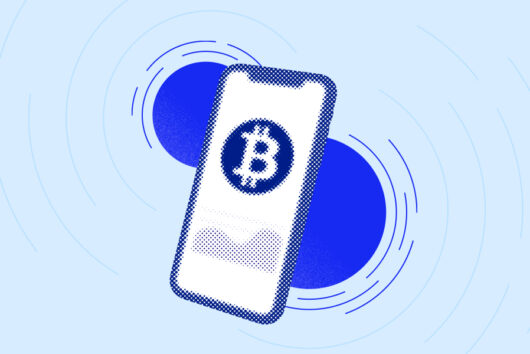Why schedule your cryptocurrency investments?
Scheduling cryptocurrency purchases at regular intervals is a great way to mitigate risk and earn profits over time, eliminating the stress of trying to buy crypto at its highest or lowest price. By investing small amounts in set regular instalments over a longer period, you remove psychological factors like fear and excitement that may cause you to buy the top or panic sell the bottom.
This is an investment strategy more commonly known as ‘dollar-cost averaging’. Dollar-cost averaging has gained popularity in recent years, as more and more people make use of its simplicity and relative security.
Trading crypto
The cryptocurrency market is still in its early stages and sudden, significant price movements remain common. If you’re holding crypto because you believe it will one day be the world’s main medium of exchange, such major price movements probably aren’t all that important – you’re simply ready for when the time comes. For others though, they can make it a very attractive asset to trade for profit.
Trading crypto is by no means a perfect science. You can invest huge amounts of time and research trying to predict the best time to buy and sell to make a profit and still get it wrong. It can be extremely stressful too. If you’re not willing to spend the time to develop a strategy that works for you and research market movements, or you just generally have a low tolerance for risk, then there are easier ways to make a living.
To hold and to hodl
An interesting thing about the price of bitcoin is that it may be volatile in the short term, but in the long-term, you could argue that it has not really been that volatile at all. It has actually only gone one way – up. For example, on 1 September 2016, you could have bought 1 bitcoin for $572. This same bitcoin would have been worth over $48,000 on 1 September 2021 – a return of almost 85X.
This long-term upwards trend has given rise to the idea of ‘hodling’, which simply put, is when you buy a lump sum of cryptocurrency and store it securely for potential long-term growth. Hodling was a name coined by the misspelling of “hold”, made by a member on the Bitcoin Talks online forum in 2013, and has been commonly used since.
Hodling requires less of your time than trading strategies which take a more short-term approach. It’s also proven effective for many when you consider Bitcoin’s meteoric rise in value since its inception.
Interestingly, HODL is also often used as an acronym for Hold On for Dear Life – particularly relevant when the Bitcoin price is falls. All you can do is ‘Hold On for Dear Life’, and wait for the price to rise. This is also telling in terms of the stress and emotion that you might experience keeping an eye on the bigger picture in these moments, keeping the faith and trying not to sell.
Scheduling investments with dollar-cost averaging
While hodling doesn’t require any technical finesse, you can still get savvy with the way you do it. By scheduling routine purchases of cryptocurrency regardless of price, you reduce the impact of price movements, remove the stress of watching and waiting, and eliminate the emotional element from your decision making. This is also known as dollar-cost averaging.
The word ‘dollar’ in dollar-cost averaging is purely semantic, and can be replaced by any currency around the world. The thinking is that by investing small amounts in regular instalments over a long period of time, you hedge against major price movements and more easily avoid mistiming the market and buying at the highest price. Timing the market with 100% accuracy all the time is impossible. Dollar-cost averaging therefore reduces your losses when the market drops to help maximise your returns. It has the added advantage of removing some of the biases from your decision-making. Once you set up dollar-cost averaging, the strategy will make the decisions for you.
To get an idea of dollar-cost averaging, you can use a nifty tool provided by dcaBTC, which helps you calculate how much you would have earned over a given period of time. For example, if you put away $10 every month for three years between 22 September 2019 to 22 September 2021, you’d have appreciated a $360 investment into $2026. That’s a 462% growth rate.
Sounds perfect, right? Not quite. There are those that believe dollar-cost averaging doesn’t give you the profits that can be gained from day trading or hodling. When the price is going up, those who invest earlier will get better results. This means dollar-cost averaging would have a dampening effect on gains in an uptrend. In this case, lump-sum investing may outperform dollar-cost averaging. Dollar-cost averaging also doesn’t entirely mitigate against all the risks and absolutely won’t guarantee a successful investment – other factors must be taken into account too. Rather, it’s simply the safest option. If you’ve got aspirations to be the next great trader, it’s probably not for you. If you’re after a more level-headed, measured approach to cryptocurrency investing, scheduling your cryptocurrency purchases is a great place to start.
 Discover
Discover Help Centre
Help Centre Status
Status Company
Company Careers
Careers Press
Press

